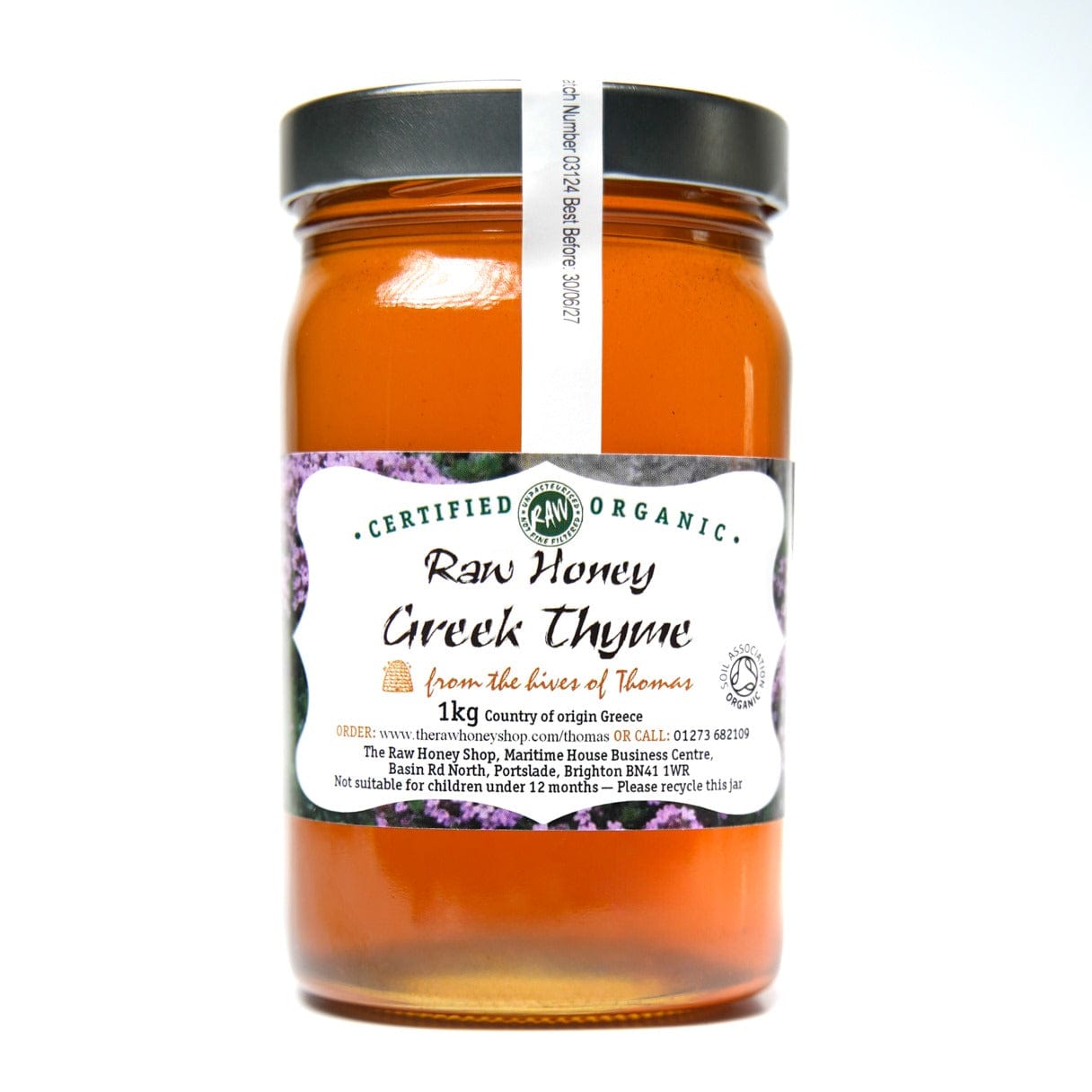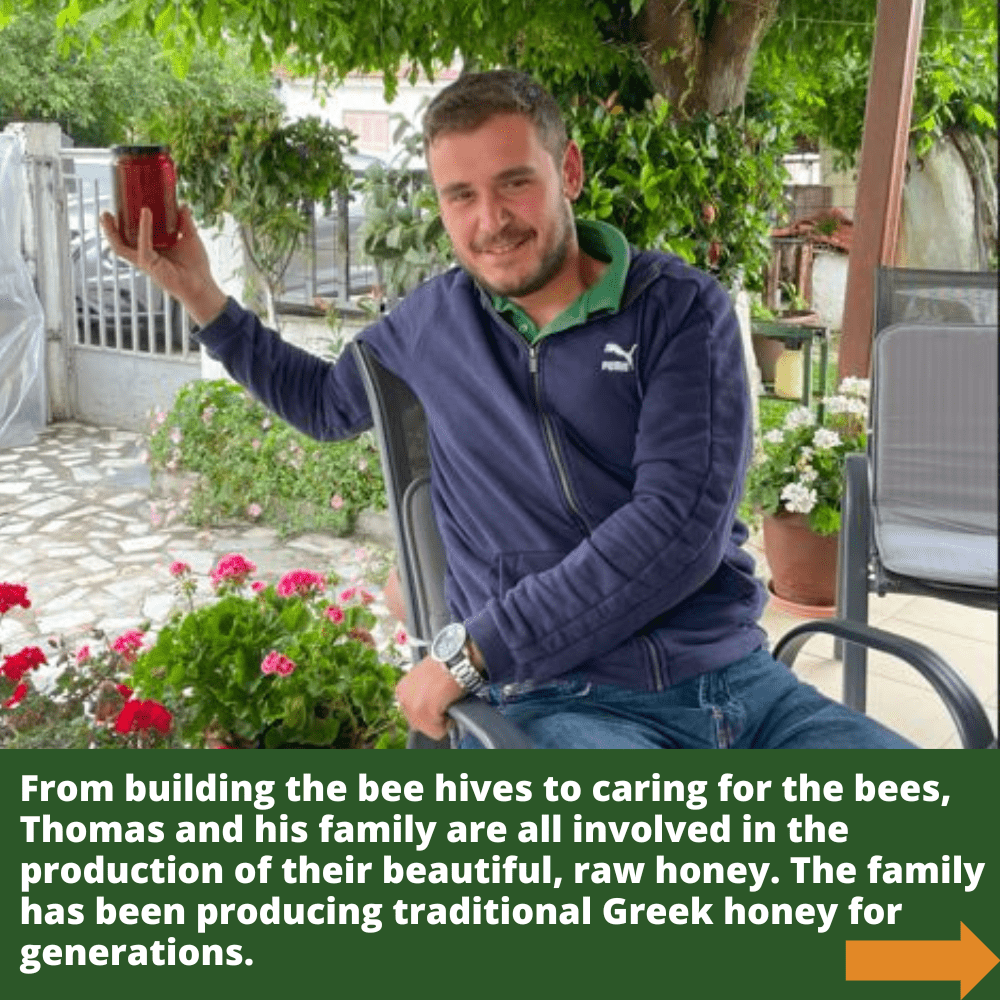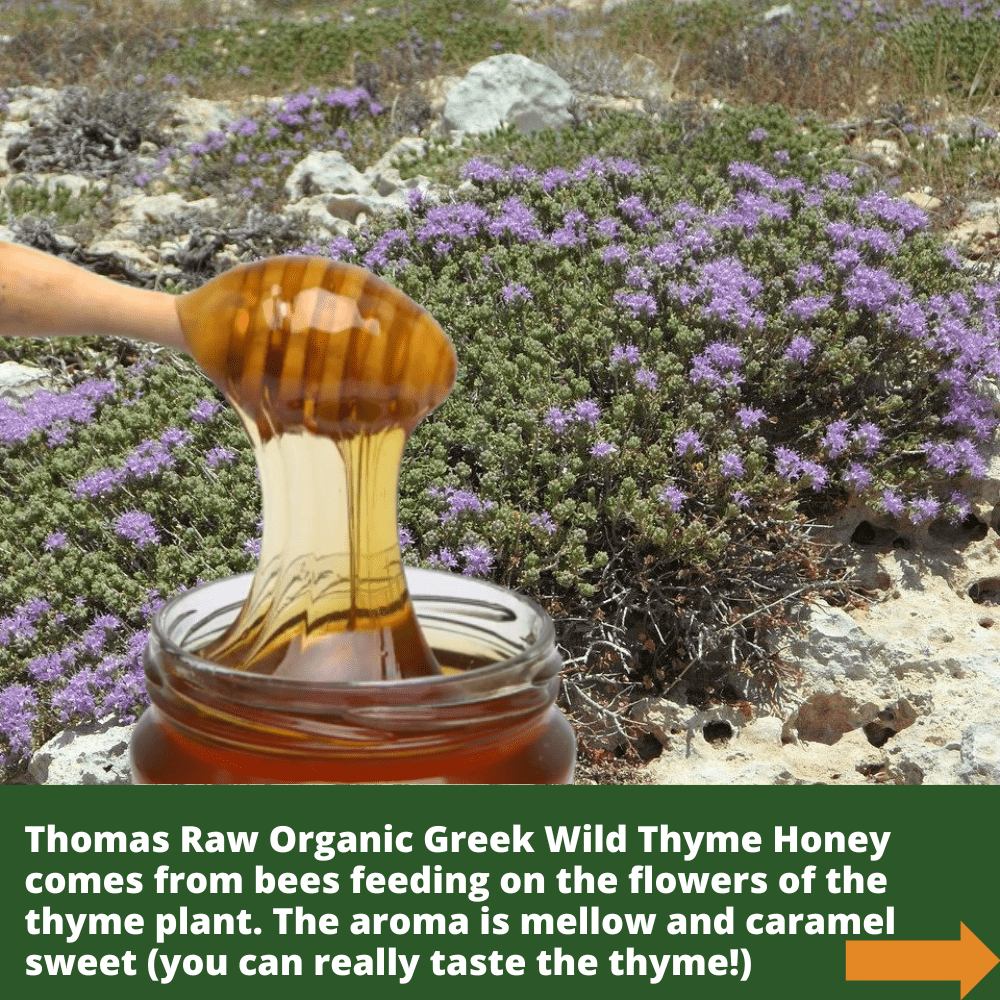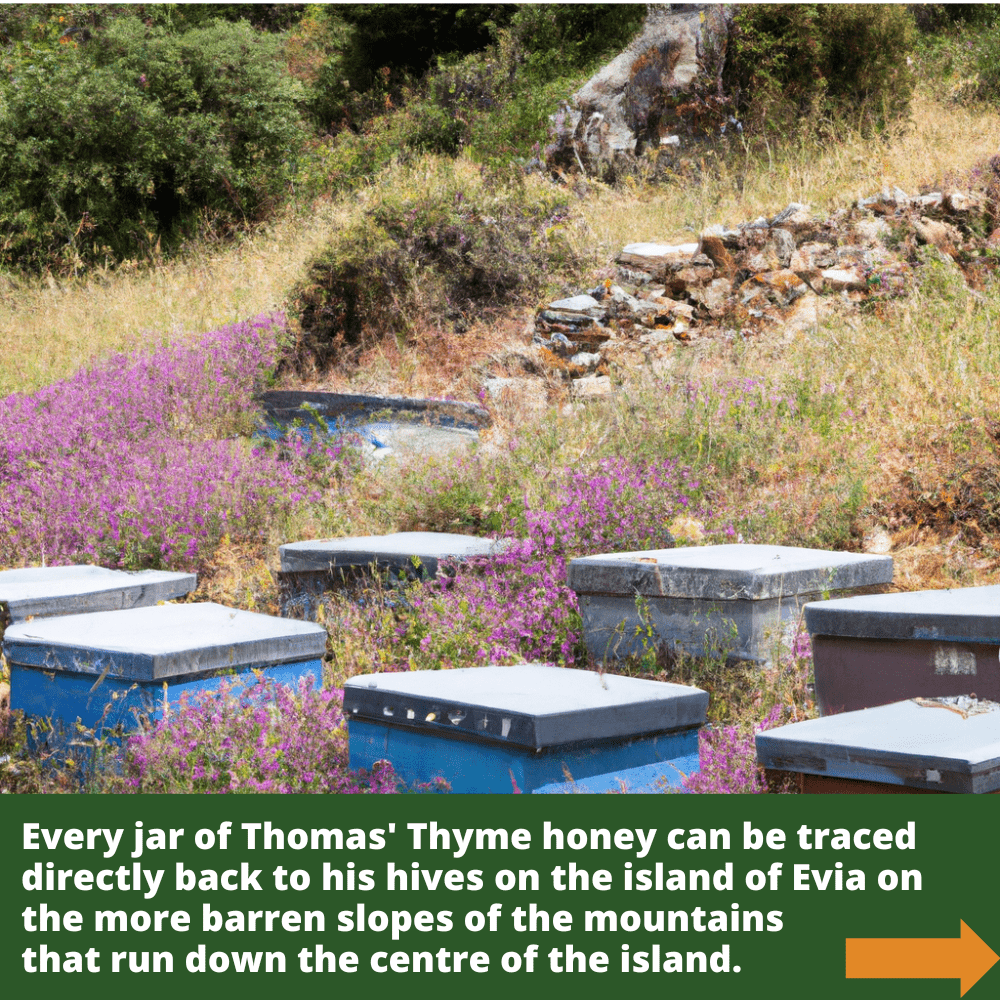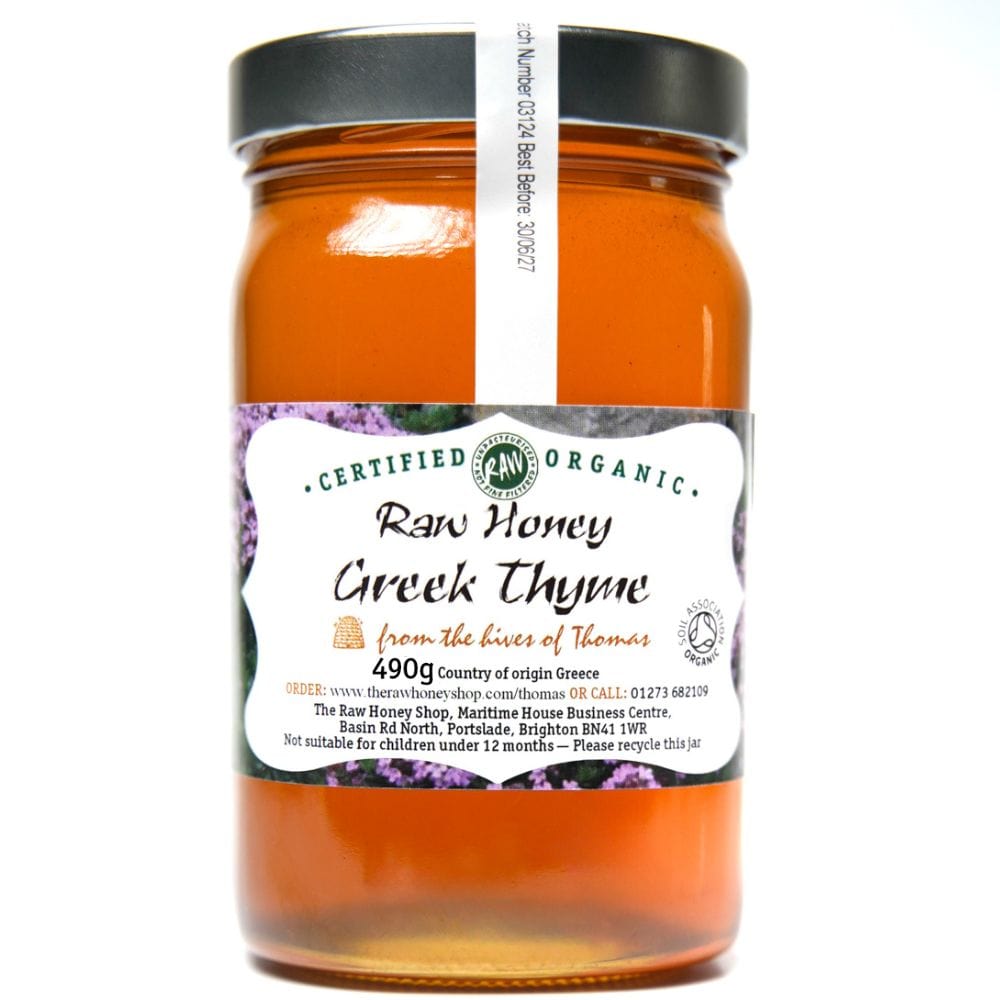Artisan Raw Organic Greek Wild Thyme Honey
- Regular price
- EUR 34,95
- Sale price
- EUR 34,95
- Regular price
-
EUR
Artisan Raw Organic Greek Wild Thyme Honey - 1kg
Thomas' Artisan Raw Organic Greek Wild Thyme Honey is another beautiful raw honey from our Greek beekeeper, Thomas and his family. It has a mild and grassy foretaste like dry mountain herbs (You can really taste the thyme!), breaking into a large, fruity flavour similar to sweet and sour summer fruits such as raspberries and red currants, then dissipating quickly to a mild and clean finish. Very slight over notes of the soft sweetness of fennel or aniseed without the strong flavour of liquorice. Strong hints of Greek mountain tea (Iron Wort or Shepherd's tea).
The aroma is mellow and caramel sweet, and the mouthfeel is thick and almost oily, similar to sunflower honey.
- You can see the bits in this honey, only very coarsely filtered.
- Colour: This particular honey is a very light sandy brown and not transparent like other varieties.
- Where does the honey come from: This variety of thyme honey comes from the northern side of the Peloponnese near to the city of Patra.
- Who produces the honey: Greek beekeeper, Thomas and his family.
-
What about the plant the honey comes from? It comes from bees feeding on the small flowers of the thyme plant. The thyme plant is an evergreen herb with many culinary, medicinal and ornamental uses. It tends to be found at higher altitudes as a perennial bush, it is harvested and used fresh, dried and even the oil extracted for use as a medicine.
- Common Uses: Thyme honey is particularly good to use on the skin to exfoliate or help clear acne and blemishes. It is also very versatile, and can be used in recipes such as salads, an accompaniment with cheeses, as a glaze for meat and it's beautiful in a light herbal tea.
- Thyme Honey Facts: Thyme honey is a favourite among many cultures, especially those of the Mediterranean and Middle East. The herb is widely used in cooking and traditional cures so naturally the honey is widely popular too.
How Raw Honey is Different from Processed Honey
Raw honey is minimally processed, meaning it’s packed with natural enzymes, pollen, and nutrients that are often lost during processing. Most supermarket honeys are processed to create a uniform appearance, often being drained of pollen, heated, and blended. Raw honey changes in flavour, colour, and texture depending on the season and the flowers that bees feed on, making each batch unique.
Crystallisation in Raw Honey
Raw honey tends to crystallise over time due to its natural glucose content. This is a natural process and does not affect the quality of the honey. For more information on why honey crystallises, visit our blog or check Wikipedia for a more scientific explanation.
About Us
At The Raw Honey Shop, we believe that honey should be RAW, unpasteurised, and 100% natural. Since 2008, we've been introducing our customers to a world of pure, all-natural, unpasteurised honey. Our catalogue includes over 30 different varieties of raw and organic honeys, each with its own unique story and flavour.
Thank you for visiting our shop. We look forward to introducing you to a world of raw, pure, and truly wonderful honey—the way the bees intended it!
Note: The product photo is representative. The colour and texture of raw honey may vary depending on the season and level of crystallisation. Please check the product title and description for accurate contents.


